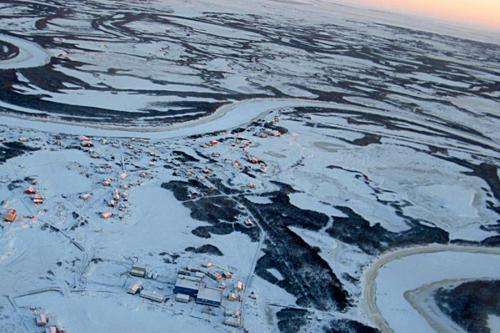Beyond taps and toilets in Alaska

Safe, clean drinking water and sewerage facilities are basic necessities you would hope to find in one of the wealthiest countries in the world. But that's not always the case in the US.
But more than 6000 Native Americans in Alaska, the largest state, have no running water and collect their sewage using a bucket system. Experts believe this inadequate sanitation is the primary reason these Indigenous Americans have a hospital admission rate for disease that is 8 per cent higher than the national average.
Researchers at the Institute for Sustainable Futures at the University of Technology, Sydney (UTS) are participating in an international competition, the Alaska Water and Sewer Challenge, to design a solution that people will use.
Early next month, Dr Dena Fam and Professor Cynthia Mitchell will go to two remote Alaskan communities with populations of fewer than 300 residents, where unemployment is high and poverty entrenched. Dr Fam and Professor Mitchell will discuss with sanitation and drinking water preferences and needs with local groups.
The initiative was launched last year after successive federal and state governments over 30 years had spent hundreds of millions of dollars and still failed to fix intractable sanitation problems with centralised systems.
In this latest move, the Alaskan government has changed track. It has invited global experts to use innovative and cost-effective technological systems to propose sustainable solutions that are decentralised, encompass a whole house's sanitation and require local maintenance and management.
Six competing international teams will consider the extreme Arctic environment, with temperatures from minus 50 degrees to 27 degrees, and the communities' remoteness – most are accessible only by boat, snow machine or small plane – as well as cultural water-use practices. The teams must also consult with the communities from start to finish.
The UTS researchers are collaborating with US engineers Vic D'Amato and Jeff Stanley and Professor Nick Ashbolt, a microbiologist and public health specialist at the University of Alberta in Canada.
Together and separately, Professor Mitchell and Dr Fam have worked on sanitation projects in Cambodia, Indonesia, the Northern Territory and Melbourne, and have consulted on the Barangaroo development in Sydney. D'Amato and Stanley, who have more than two decades' experience in Alaskan sanitation facilities, are enthusiastic about the UTS focus on a decentralised solution for the 6000 Indigenous people in the remote state.
The project will involve consultations with tribal chiefs, schoolchildren, women's groups and other community members, as well as training an Indigenous researcher to explore cultural practices in water and sanitation. Admittedly, many of the communities have what Stanley describes as "study fatigue", feeling they have been examined endlessly but without results.
Dr Fam says: "It's important that we are not just going to these communities and taking data. We want to do our best to provide something in return. Our aim is to engage with the local school and actually stay with the communities up to six weeks.
"We have to be culturally sensitive as people initially might not say what they mean. We will need to take time to sit with them and have several conversations about very intimate details of their lives."
After Dr Fam and Professor Mitchell have collected their social data, they will report to other team members, and with them will propose a prototype by the end of June. The Alaskan government will select up to three teams' prototypes for implementation.
"It is very exciting to have the opportunity to be involved in something with the potential to create change in these communities, as a result of our contribution and expertise in design thinking," Dr Fam says.
Stanley believes some of the lessons learnt on this project could affect sanitation programs in other Indigenous communities. "Acceptance of the solution and a commitment to improved health are more important than the technology itself," he says.
"Change takes time and without adequate [community] support, whatever is installed will likely be abandoned before its life expectancy."


















